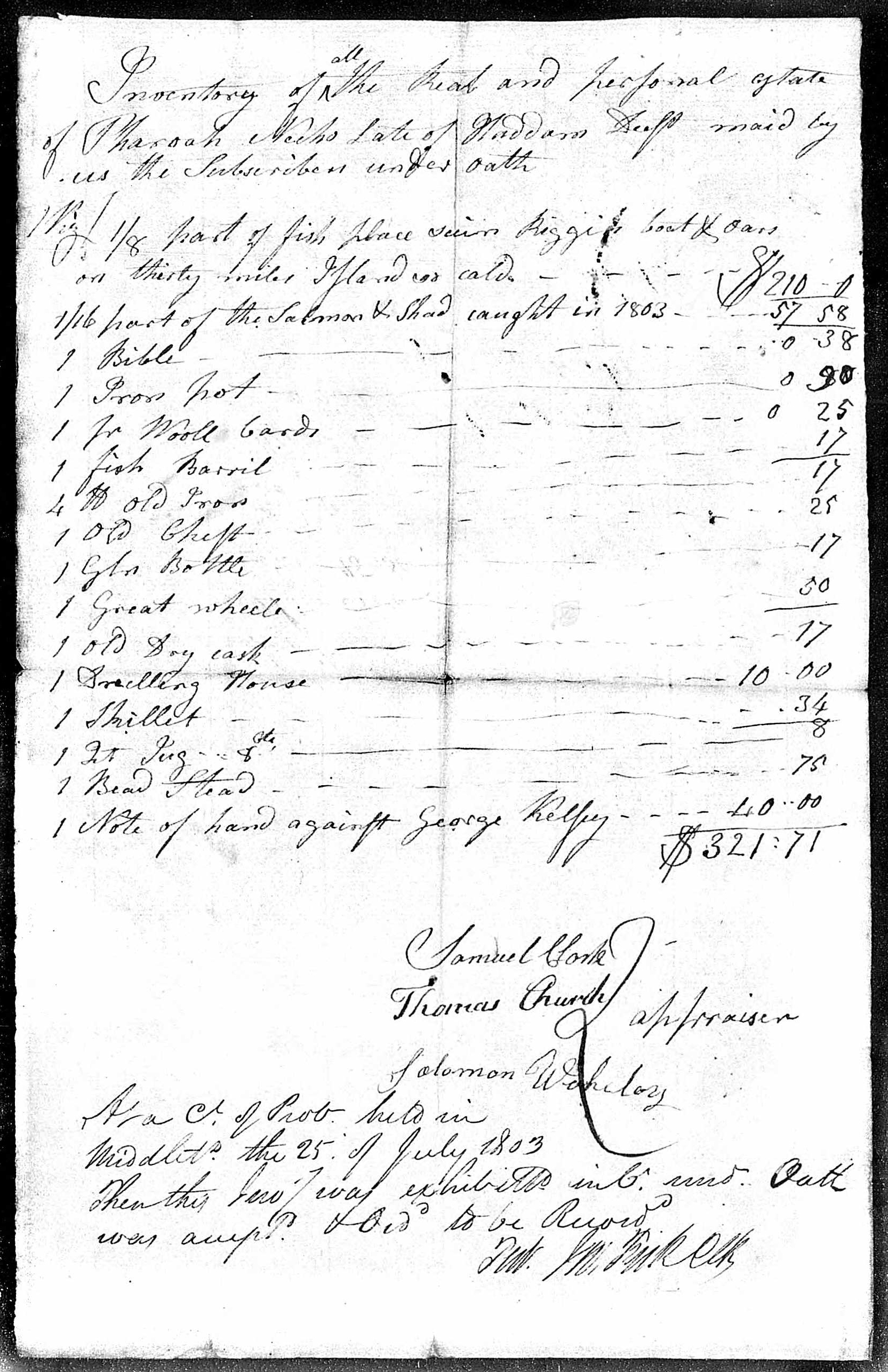Black History Month: Who was Pharaoh Necho?
Posted on
Connecticut’s role in slavery cannot be overlooked. By the time of the Revolutionary War, our state had the largest number of slaves in New England, and the enslaved worked as farm hands, household servants, in businesses and on ships. Connecticut was very slow and cautious to bring freedom to the enslaved and passed the Gradual Abolition Act of 1784 which did not immediately free slaves but granted freedom only to those born into slavery and after they reached the age of 25. Slavery did not end in Connecticut until 1848, long after our neighboring states.
In an effort to bring to light our community’s diverse and unnoticed past, the Haddam Historical Society is currently researching Haddam’s former enslaved residents. Eighteen slaves are recorded in the 1756 Connecticut Census, and three slaves are enumerated in the 1790 Federal Census for Haddam. Research has proven to be challenging as there is little primary documentation or written histories of Haddam’s enslaved residents.
Quite by accident, we came across Pharaoh (Pharo) Necho in a Joseph Arnold’s 1772 will. Joseph (an older relative of Thankful by marriage) states that upon his death, “I give my negro servant Necho his time that he may be free from a master after my death and if he is not able to maintain himself by reason of sickness, lameness or any infirmity my will is that my cousin Joseph Arnold shall maintain him out of that part of my estate that I gave him.”
Shortly after the will was written, Necho married Tamar, the “servant” of Reverend Eleazer May which is recorded in the First Congregational Church of Haddam records of 1773. In Colonial era New England, slaves were frequently referred to as servants. We are currently looking into Tamar’s history and hope to report more on her later.
It appears that Joseph Arnold was true to this word, and Necho was freed upon Arnold’s death in 1782. The 1790 Federal Census lists Necho (Negro) a freed black. However, it appears that Tamar, his wife, was still living with the May family as they are listed as having one slave, and Pharaoh is living alone. It is possible that Tamar had died by 1800 as the May family no longer lists a slave in their household, and Necho is still living alone.
Very little documentation survives on Pharaoh’s early life. He is listed on the rolls of Connecticut men serving in the French and Indian War from 1755-1762 which indicates he was born in Connecticut in 1730. The 2nd Lieutenant of Necho’s company (7th Company of the 4th Regiment) was Nehemiah Dickinson of Haddam. Pharaoh served from September to December of 1755.
Once freed Pharaoh earned a living fishing for salmon and shad. He not only owned a boat and oars but also 1/8 part of a fishing place on Thirty Mile Island which he leased out from time to time. Pharaoh was successful enough to buy land and build a house. When he died in 1803, his inventory was worth $321.71, but after paying off debts and court expenses, the estate was deemed insolvent.
Little else is known of Pharaoh Necho, but research continues, and we hope to uncover more in the future.

Above: Photo of Pharaoh Necho’s Inventory, 1803, from Connecticut’s Wills and Probate Records, Ancestry.com. Inventory includes 1/8 fishing place, 1/16 of salmon and shad caught in 1803, dwelling house and 1 Bible.
